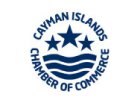Some useful tips for managing all those emails…
by Carolyn on January 27, 2012
This week I have a little bit of email guilt. On Tuesday and Wednesday I largely ignored my emails in an effort to achieve a time consuming and tedious task that I just hadn’t got around to completing. Emails are almost unavoidable in the world of work today, and are definitely unavoidable in my job. What concerns me, something that is articulated very nicely by Seth Godin, is that “productivity loses to politeness”.
There are obviously two sides to this argument as email is still a valuable form of communication, and communication helps us to build relationships and achieve our goals. Responses to emails can also mean results but most of us would still be happy with fewer emails…
It would be quite possible to spend all day responding to emails and not achieving very much else. Unfortunately, that’s not often what we’re employed to do. However, following a productive couple of days, I’ve discovered some useful tips for managing my inbox:
Process emails in batches
Unless you’re expecting something urgent, it’s not necessary to check emails constantly during the day as this will constantly interrupt whatever else you’re working on. Dr Thomas Jackson of Loughborough University found that it takes an average of 64 seconds to recover your train of thought after interruption by email. So people who check their email every five minutes are wasting more than eight hours a week figuring out what they were doing moments before.
Read it and then respond
Many people have the habit of reading all their new emails before actually replying to them. I have been known to do this. This is ineffective for two reasons. Firstly, some of the emails might be forgotten about altogether. Secondly, this process is more time consuming, since you will probably need to read each email a second time before replying.
Keep it short and sweet
This benefits you and the recipient, particularly if you are both very busy. Address the essential items, leaving out unnecessary words and sentences. The use of paragraphs can make your email more approachable and easier to read. And write in a positive tone, as something in writing is far more easily misinterpreted when there is no voice or body language to back it up.
Use bridging emails
It can be important to let people know that you have received their message, query, or request, even if you won’t be able to provide an answer for a while. Acknowledging an email can mean the difference between leaving a positive or a negative impression.
Some of these tips might seem basic but it easy to fall into bad habits, especially when feeling overwhelmed. From now on I resolve to be productive (and polite!) by managing my emails more effectively.
http://news.cnet.com/8301-13846_3-10037909-62.html?part=rss&subj=news&tag=2547-1_3-0-5
SHARE THIS ARTICLE
Recent Articles







